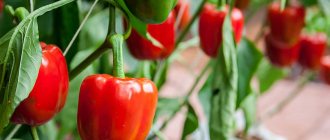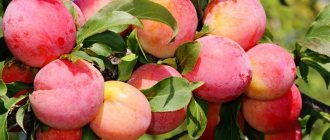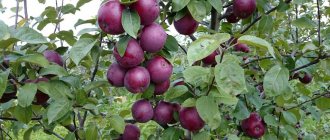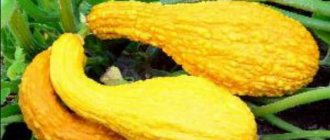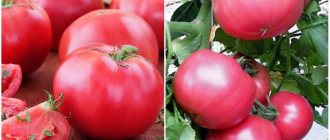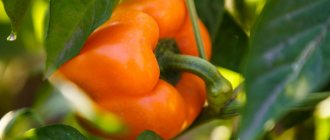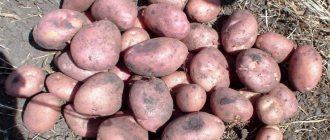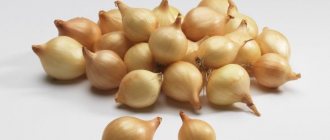Bell peppers are a valuable source of vitamins and minerals. The vegetable contains fiber, folic acid, calcium, iodine, iron and many other useful components. In order not to look for tasty and high-quality peppers on store shelves, gardeners prefer to grow them themselves on their own plot.
When choosing varieties, pay attention to taste and commercial qualities, requirements for care, and plant resistance to bad weather. One of the leaders is the Red Bull hybrid. Let's consider its distinctive features.
Description of pepper
Hybrid Red bull f1 combines all the best: large fruits, glossy surface, fleshy pulp and versatility in use. The vegetable is grown mainly in the south and central Russia.
Distinctive features
The bushes are tall, reaching a height of 1.5 m. The leaves are medium sized, light green in color . The hybrid is mid-early and matures in 90–100 days from planting.
When grown in open ground, the seedling method is used. Red bull has high immunity to common crop diseases and insect pests.
Fruit characteristics and yield
The fruits are large, the weight of one varies from 200 to 400 g. The color is deep red, the surface is smooth. The walls are dense, the average thickness is 9 mm, which is why the crop can be stored for 2-3 months without loss of taste.
Up to 9 kg of sweet pepper is harvested from 1 m2. The flesh is crispy and juicy, moderately sweet. Contains many vitamins and is widely used in cooking for preparing vegetable salads, side dishes and winter preparations.
Interesting ! Folic acid, contained in the pulp of sweet peppers, removes waste and toxins from the body. B vitamins are effective in preventing mood swings and insomnia.
Useful qualities and place in the medical industry
As a result of research, scientists came to the conclusion that the Red Bull pepper contains substances that are beneficial for the human body, such as:
- most B vitamins (thiamine, folic acid, etc.);
- ascorbic acid (vitamin C);
- carotene (provitamin; when interacting with fats, it turns into vitamin A);
- essential oils;
- carbohydrates;
- nitrogenous substances;
- minerals: sodium, potassium, calcium, ferum, sulfur, silicon, phosphorus.
And also as a result of research, it has been proven that carotene and vitamin C, which are part of the Red Bull, prevent the development of cancer cells and promote the healing of stomach ulcers.
Red bull pepper has excellent taste - the flesh is aromatic, tender, sweet and juicy. The microelement composition is represented by vitamins B, C, P, PP, as well as a complex of mineral salts, which makes the culture tasty and healthy. The red vegetable is consumed canned, stewed and fresh, as part of various dishes.
Preparation for cultivation
Peppers are grown in sandy loam beds with a low acidity level. The best predecessors are greens, legumes or onions . It is not recommended to plant a hybrid after potatoes or tomatoes.
At the end of October, the beds are dug up and a layer of peat and compost is added. With the arrival of spring, they dig up again, break up all large lumps, and clean from leaves, debris and weeds. The soil surface should be flat, with clear row spacing. The recommended planting pattern is 70x70. Thickening reduces yield and promotes the development of dangerous bacteria. To reduce the acidity of the soil, the soil is sprinkled with a mixture of dry wood ash and lime. The procedure is carried out before planting the seeds.
Purchase planting material only from trusted stores . It is important that the packaging is intact and has not expired. Seeds are inspected for external defects, and damaged specimens are removed. The remaining seeds are disinfected using boric acid or Bordeaux mixture. Afterwards, the seed is germinated: placed in a damp cloth and placed on a sunny windowsill. This strengthens the immunity of future plants and accelerates germination.
Interesting ! The method of germinating seeds in sand is also effective. Disinfected seeds are mixed with wet sand in a ratio of 1:4. The mixture is transferred into small containers and stored in a warm place. After the seeds hatch, they are transplanted into a seedling container together with sand.
Features of agricultural technology
Before you start planting peppers, you need to select a good site, healthy and high-quality planting material, and grow strong seedlings.
Seed treatment
In order for the seedlings to grow healthy, with a good immune system and grow quickly, seed material should be prepared, which involves:
- pickling;
- keeping in a nutrient solution;
- germination;
- hardening.
To begin with, the seeds are kept for 20–30 minutes in a solution of potassium permanganate. Such treatment is necessary to prevent the development of certain diseases. After dressing, the seed material is washed under running water and placed in a nutrient solution to improve germination.
There are several options for feeding seeds:
- Dissolve nitrophoska (1 tsp) in 1 liter of water and soak the seed for a day.
- Mix wood ash (1 tsp) with 1 liter of water. Soak the seeds for 24 hours.
- Place the planting material in a liquid solution of sodium humate, heated to a temperature of +25...+28°C. The duration of the procedure is one day.
- Soak in warm preparation “Ideal” (+25…+28°C) for a day.
- Mix Azotofit product (5–10 ml) with 0.5 liters of water. Soaking duration is 2 hours.
Germination is carried out as follows:
- Place fabric on the bottom of a flat container.
- Moisten it and moisten it with an aqueous solution of wood ash (1 tbsp. / 1 l).
- Seeds are poured onto a damp cloth.
- Cover the container with film or glass.
- Place in a room with a temperature of +25…+30°C.
- If necessary, moisten the seeds with a spray bottle.
Selecting containers for seedlings
You can choose different containers for planting seedlings - special ones purchased in the store (peat cups, cassettes), or those that you found on hand (boxes, trays). Regular plastic glasses will do.
Soil preparation
The soil for growing seedlings also requires preparation and treatment. It is worth choosing light and loose soil, through which nutrients can quickly reach the root system. The soil can be purchased at a specialty store. The packaging should indicate: “For seedlings.”
You can also make it yourself by mixing the following components:
- humus (2 parts) with turf soil (1 part);
- peat with humus (in a ratio of 1 to 1);
- nutritious peat mixture (2 parts) with turf soil (1 part);
- peat (4 parts) with turf soil (2 parts), humus (1 part), rotted sawdust (1 part).
Soil mixed from different components must be disinfected.
Soil etching is carried out using several methods:
- Water with a dark pink solution of potassium permanganate.
- Pour boiling water over it.
- Keep in the oven at a temperature of +80. +90°C for 20–40 minutes.
- Place in a steam bath for 40 minutes.
- Place in the microwave on maximum mode for 10 minutes.
The treated soil is left to sit for a couple of weeks so that it becomes populated with beneficial bacteria. Immediately before planting, it is well moistened.
Sowing seeds
Pepper seeds are sown in late February - early March. If one large container is selected for sowing, then furrows are made in it and the seeds are placed to a depth of 1–1.5 cm.
A distance of 3–4 cm is left between the furrows. In separate containers, make 2 holes 1–1.5 cm deep and place 1 seed in them. The seeds are sprinkled with soil. The containers are covered with film or glass, then placed in a warm room.
Growing seedlings
It is recommended to grow seedlings in peat tablets or pots. Such containers are inexpensive and are sold at any gardening store. Peat tablets retain moisture and are easy to use. If it is not possible to purchase containers, use cardboard milk cartons, flower pots, and plastic cups. The main thing is to pre-wash the container and wipe it with a clean towel.
The soil used is soil from the garden, mixed with purchased soil. To be safe, the composition is disinfected with a solution of potassium permanganate to kill dangerous bacteria and pathogens. It is recommended to add river sand or sawdust.
Natural components serve as an excellent leavening agent and retain moisture in the soil. Before planting the seeds, the soil is poured into a container and watered abundantly. Next, make small holes at a distance of about 2 cm from each other. A seed is placed in each and sprinkled with soil on top. Keep the seedlings in a warm place.
The soil should always be slightly moist; drying out is unacceptable. For watering, use a pipette so that the water gets directly under the base of the stem. When the first leaves appear, apply liquid organic fertilizers, for example, chicken manure or a solution based on wood ash. If there is a lack of light and heat, peppers are placed under fluorescent lamps to speed up development. Before planting in the garden, seedlings are watered abundantly.
Important ! With rapid growth, they organize a pick. The procedure is necessary to ensure healthy development of the root system. Over time, the roots become larger and require a larger container. The seedlings are carefully removed and transplanted into another container with new disinfected soil. When picking, it is recommended to act carefully, without haste, so as not to damage the still fragile stems and leaves.
Landing
Pepper seedlings are planted in pre-prepared beds on a windless and cloudy morning. The seedlings are carefully removed from the container, leaving a lump of wet earth on the roots, placed in holes in the garden bed, sprinkled and patted with the palm of your hand.
It is recommended to cover each plant with a plastic bag or film during the first week. This will protect the sprouts from rain, winds and possible frosts. In the future, the hybrid needs a garter, so a wooden peg is installed in advance near each bush.
Further care
The basis of any care is timely and regular watering . The hybrid is moistened once every 5-6 days; 1 bush requires about 1.5 liters of water. If the summer is hot and rainy, the amount of watering is reduced. Before the procedure, the beds are loosened to improve the quality of the soil and retain moisture in the ground. The optimal loosening depth is 10–15 cm.
The plant is fed 3-4 times during the ripening period. The first feeding is organized 2 weeks after planting on the site. Slurry, wood ash, superphosphate, and ammonium nitrate are used as fertilizers.
It is recommended to alternate mineral and organic fertilizers. You also cannot do without foliar feeding. To strengthen the immune system, plants are sprayed with a whey solution or Bordeaux mixture.
Recommendations and tips
To successfully harvest the Bulgarian “giant”, gardeners are advised to follow some recommendations. They are as follows:
- Pepper loves fertilized soil, loose, moisture-absorbing and free from diseases and various pathogens.
- Regular watering of the plant will ensure good growth. Insufficient moisture inhibits the development of a young plant.
- The optimal temperature for vegetables is plus 25 degrees. It grows well in the middle zone.
- Before sowing, the seeds are treated with a two percent solution of potassium permanganate and washed with cold water. To speed up the germination of seeds, they are soaked in special nutrient mixtures.
- During growth, you should ensure that excess nitrogen from fertilizer does not form under the bush, otherwise the plant will shed its ovaries.
- During fruit formation, the plant needs to apply mineral fertilizers.
- Don't forget about pests and diseases. Although peppers are resistant to various diseases, pests can be repelled by spraying with special solutions and using agrotechnical tricks.
- Pepper is a hybrid. Its seeds are not suitable for secondary planting.
- Fruits must be collected at the stage of technical ripeness. The fruits ripen during storage. Otherwise, it is difficult for the bushes to withstand heavy loads, and they break.
To sow bell peppers, you must use seeds from proven sources. High-quality planting material is the key to a good harvest. They should be purchased in specialized stores. The Bulgarian beauty Red Bull is a popular variety among gardeners. The vegetable is completely unpretentious, its yield is at the highest level, and its taste characteristics are simply excellent. The culture is rich in vitamins and microelements necessary for humans. Eating it raw improves the general condition of the body and stabilizes the functioning of the digestive system.
Features of cultivation and possible difficulties
A tall plant requires obligatory garter. Pepper stems are very fragile, so they can break under the weight of ripe fruits. To prevent this, each skeletal branch is tied to the support separately. It is important to wipe the pegs with a disinfecting solution before the procedure.
It is impossible to get a rich harvest without forming a bush. Too long shoots and branches are shortened with garden shears and the tops are pinched. If this is not done, there will be a lot of fruits, not all of them will have enough strength to develop, and the peppers will remain small.
When growing vegetables in a greenhouse, a number of important rules are followed:
- Regularly ventilate the building, open doors and vents.
- Water the bushes strictly at the root, spending 1-2 liters of water for each.
- Hill up and loosen the row spacing to prevent the appearance of insects.
- During the flowering period, the bushes are shaken to activate pollination.
Typical diseases and pests
Diseases appear due to non-compliance with crop rotation rules, improper care, and contaminated soil. To prevent the occurrence of diseases, it is recommended to follow the watering and fertilizing regime and use trusted seed producers.
What diseases are Red Bull pepper susceptible to?
- Root rot affects bushes at the seedling development stage. At the same time, a white coating appears on the roots. For treatment, the drug “Topaz” or “Quadris” is used.
- Powdery mildew appears as a white coating on the leaves and stem. If measures are not taken in time, the fruits become deformed and lose their elasticity. To combat the disease, use a solution of copper sulfate or wood ash.
- Tobacco mosaic occurs due to contaminated soil and hot summers. The leaves are covered with a yellow-brown pattern. For treatment, use the drug “Kemira” or spraying with the “HOM” product.
Pests include wireworms, slugs, whiteflies and Colorado potato beetles. An excellent preventive measure against them is regular weeding of the beds and removal of weeds.
We recommend periodically inspecting the bushes for pests. To get rid of insects, they use professional means: “Typhoon”, “Vectra”, “Maxim”.
Productivity
This vegetable crop can produce up to nine kilograms of juicy fruit from one square meter. Many of those who have tried to grow this red pepper leave their reviews for those who are encountering this plant for the first time. Therefore, it is worth listening to the opinion of experienced gardeners who believe that it is better to harvest the crop at the stage of technical ripeness, when the color of the fruit is light green. Otherwise, the bushes may not be able to withstand a sufficiently large load, which further increases the risk of pest damage to the plant. And the fruits will ripen to a juicy red color, indicating biological ripeness, during storage.
Advantages and disadvantages of the variety
The Red Bull hybrid has excellent immunity to cold and rainy weather. The following advantages are also noted:
- high productivity;
- sweet and fleshy pulp;
- the ability to grow both in open ground and in a greenhouse;
- resistance to diseases and pests.
Among the disadvantages, the need for garter and bush formation is noted. Many hybrids do not need these procedures.
Similar species
The Red Bull has “brothers” - the Yellow Bull and Orange Bull peppers. Mid-early Yellow Bull is a hybrid with large peppers of rich yellow color. The shape is truncated, slightly elongated. The weight of the fruit varies from 200 to 300 g, the average length is 20 cm. The pulp is juicy and thick, the skin is thin. The vegetable is grown in warm regions of the country.
The orange bull is orange-brown in color. Ripens in 100–110 days. The taste is juicy, without bitterness. The peel is dense, so the crop can be stored for 2-3 months without loss of taste and marketability. Great for cooking and eating fresh.
Important ! The cultivation technology for all peppers is the same. The main thing is to water and fertilize the beds on time, loosen the soil and remove weeds.
Yellow Ox
Another type of variety with an average ripening period.
Large and beautiful fruits, reaching 200-300 g in weight. The bush is spreading, medium-sized. The species name of this variety speaks for itself. The fruits are yellow in full ripening.
They can be harvested at technical maturity, when they have gained the required weight of the fruit, but will be green in color. Fruits can set before the onset of cold weather.
They are well preserved and can be used in salads, frozen or when preparing for the winter. Every year, new varieties of pepper appear on sale, so you need to keep an eye on the new products.
Gardeners' advice: gardeners prefer to focus on hybrid varieties to get an excellent harvest.
How to choose pepper seeds for your plot, see expert advice and an overview of pepper varieties in the following video:
Reviews
Some gardeners plant only the Red Bull hybrid on their plot, others prefer varieties that are less demanding to care for. Let's study several reviews from experienced summer residents.
Olga, Saratov: “The Red Bull pepper is an excellent hybrid. I like it because of its juiciness and sweetness. I use it for preparing winter preparations. The dishes turn out delicious and healthy!”
Irina, Ufa: “I plant the hybrid only in a greenhouse. I water it early in the morning to prevent sunburn. I fertilize with superphosphate and ash. The yield is good, I harvest up to 3 kg from one bush.”
Mikhail, Moscow: “The hybrid Red Bull fell ill with powdery mildew last year. It was possible to cure, but 80% of the crop died. I won’t plant it anymore; I’m trying vegetables that are more disease-resistant.”
